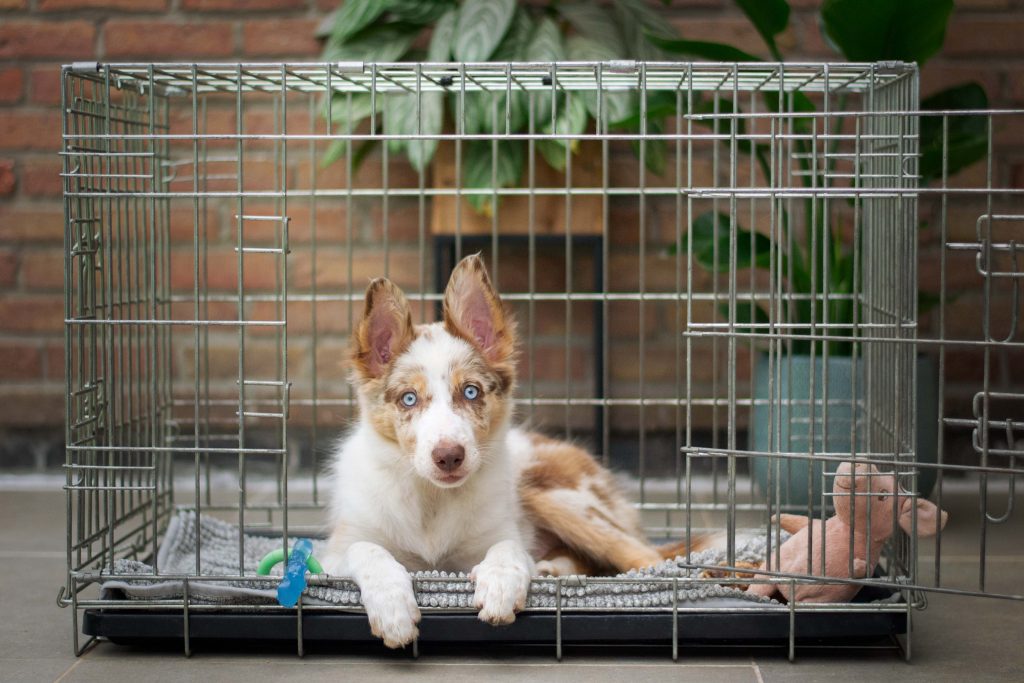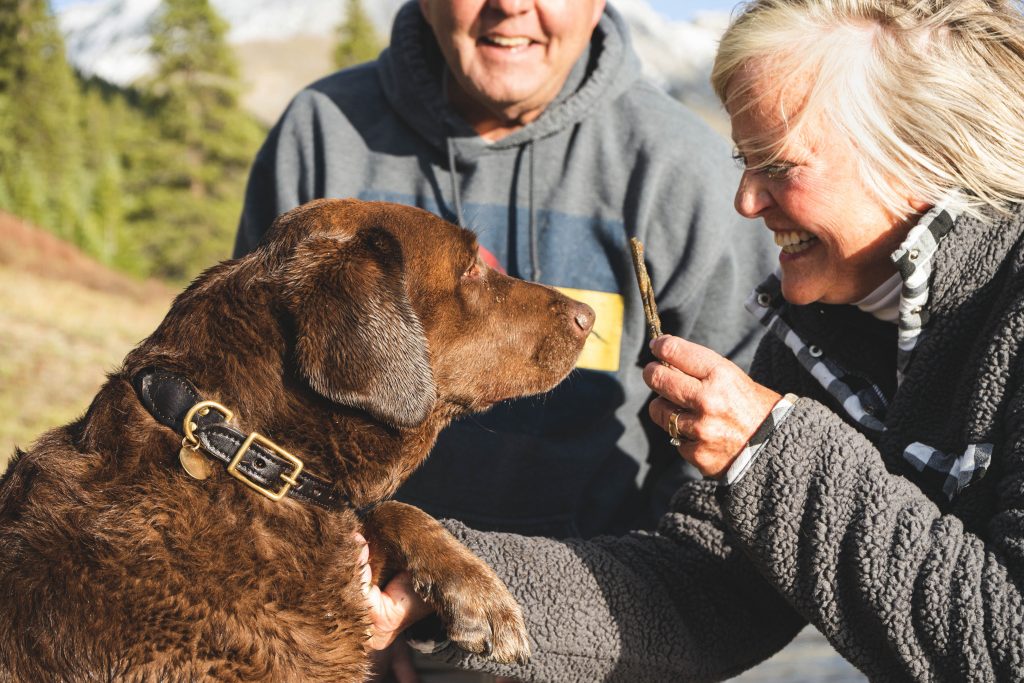Walking on a loose leash is important for the safety and enjoyment of both the dog and the person walking them. It allows the dog to have more freedom of movement and can make the walk more enjoyable for both parties. It also helps to prevent the dog from pulling on the leash, which can be uncomfortable and even dangerous if the dog is strong and the person is not able to control them. The blog post likely includes step-by-step instructions and tips on how to teach a dog to walk on a loose leash, including using positive reinforcement and setting clear boundaries and expectations for the dog.

Walking your dog on a leash is an important part of being a responsible pet owner, but it can also be a source of frustration if your dog is constantly pulling on the leash. Not only is this uncomfortable for you, it can also be dangerous if you’re unable to control your dog. That’s why it’s important to teach your dog to walk on a loose leash, which means the leash is slack and not tight.
Here are some tips on how to do this:
- Start by using a front-clip harness. These types of harnesses are designed to help prevent pulling by redirecting your dog’s attention back toward you.
- Use positive reinforcement to reward good leash behavior. When your dog is walking on a loose leash, praise them and give them a treat. This will help them associate walking on a loose leash with good things.
- Use a treat to lure your dog into the correct position. Hold a treat in front of your dog’s nose and slowly move it towards your left hip. This will encourage your dog to walk by your side.
- Use a short leash. A shorter leash will give you more control over your dog and make it easier for you to correct their behavior if they start to pull.
- Set boundaries and be consistent. If your dog starts to pull, immediately stop moving forward and wait for them to return to a loose leash before continuing. This will teach them that pulling on the leash results in a loss of freedom, whereas walking on a loose leash allows them to explore.
- Practice in a low-distraction environment: It’s easier for your dog to focus on you and the task at hand when there aren’t many distractions around. Start practicing in a quiet area with few distractions, such as your backyard or a deserted street, and gradually increase the level of distractions as your dog improves.
- Don’t pull on the leash: If your dog starts to pull on the leash, gently guide them back to you using the leash and treats or a toy. Avoid pulling on the leash or yanking them back towards you, as this can be uncomfortable and frustrating for your dog.
- Take breaks: Walking on a loose leash can be a lot of work for your dog, especially if they are not used to it. Take breaks during your walks to give them a chance to rest and recharge.
- Use a clicker: A clicker is a small device that makes a distinctive sound when pressed. You can use it to mark the exact moment that your dog is walking on a loose leash, and then immediately reward them. This will help them to understand exactly what behavior you are reinforcing.
- Practice “heeling”: Heeling is a training technique in which your dog stays by your side and matches your pace while walking. To teach your dog to heel, start by standing still and holding a treat in your hand. When your dog looks at the treat, say “heel” and take a step forward. As they follow you, reward them with a treat.
With patience and consistency, your dog will learn to walk on a loose leash and enjoy their walks with you even more. Remember to always praise and reward your dog for their good behavior, and be patient with them as they learn this new skill. With time and practice, your dog will be walking beautifully on a loose leash in no time!

In conclusion:
Teaching your dog to walk on a loose leash is an important part of being a responsible pet owner. It allows for a more enjoyable and safe walk for both you and your dog and can prevent uncomfortable and potentially dangerous situations caused by a dog pulling on the leash. By using positive reinforcement, setting boundaries and being consistent, and using tools such as a front-clip harness and a short leash, you can effectively train your dog to walk on a loose leash. With patience and practice, your dog will soon understand the expectations and be able to enjoy leash walks with you.

Frequently Asked Questions
How do I get my dog to stop pulling on the leash?
To get your dog to stop pulling on the leash, you can try using a front-clip harness, which is designed to help prevent pulling by redirecting your dog’s attention back toward you. You can also use positive reinforcement to reward good leash behavior, and use a treat to lure your dog into the correct position.
What is the best way to train my dog to walk on a leash?
The best way to train your dog to walk on a leash is to use a combination of positive reinforcement and consistency. Reward your dog for good leash behavior, such as walking on a loose leash, and use a short leash to give you more control over your dog. Set clear boundaries and be consistent in your training by immediately stopping and waiting for your dog to return to a loose leash if they start to pull.
How do I teach my dog to walk by my side on a leash?
To teach your dog to walk by your side on a leash, hold a treat in front of their nose and slowly move it towards your left hip. This will encourage your dog to walk by your side. You can also use positive reinforcement to reward your dog for staying by your side.
How can I prevent my dog from pulling on the leash?
To prevent your dog from pulling on the leash, you can try using a front-clip harness and a short leash, as well as using positive reinforcement to reward good leash behavior. It’s also important to set boundaries and be consistent in your training and to immediately stop and wait for your dog to return to a loose leash if they start to pull.
How do I use positive reinforcement to train my dog to walk on a loose leash?
To use positive reinforcement to train your dog to walk on a loose leash, be sure to praise your dog and give them a treat whenever they are walking on a loose leash. This will help them associate walking on a loose leash with good things.
What tools or equipment can I use to help teach my dog to walk on a loose leash?
Some tools and equipment that can help you teach your dog to walk on a loose leash include a front-clip harness, a short leash, and treats. These tools can help give you more control over your dog and make it easier to reward good leash behavior.
How can I set boundaries and be consistent in my leash training?
To set boundaries and be consistent in your leash training, it’s important to establish clear rules and expectations for your dog. If your dog starts to pull on the leash, immediately stop moving forward and wait for them to return to a loose leash before continuing. This will teach your dog that pulling on the leash results in a loss of freedom, whereas walking on a loose leash allows them to explore.
What should I do if my dog starts to pull on the leash during a walk?
If your dog starts to pull on the leash during a walk, immediately stop moving forward and wait for them to return to a loose leash before continuing. This will teach your dog that pulling on the leash is not acceptable behavior.
How long does it typically take to teach a dog to walk on a loose leash?
How long it takes to teach a dog to walk on a loose leash will depend on the individual dog and its previous training. Some dogs may learn quickly, while others may take longer. It’s important to be patient and consistent in your training and to remember that it takes time for your dog to learn and understand the expectations.
Are there any common mistakes that dog owners make when trying to teach their dog to walk on a loose leash?
Some common mistakes that dog owners make when trying to teach their dog to walk on a loose leash include using a collar instead of a harness, pulling or yanking on the leash, and not using positive reinforcement or setting clear boundaries and expectations. It’s important to use a harness, avoid pulling or yanking on the leash and use positive reinforcement and consistency in your training to effectively teach your dog to walk on a loose leash.



